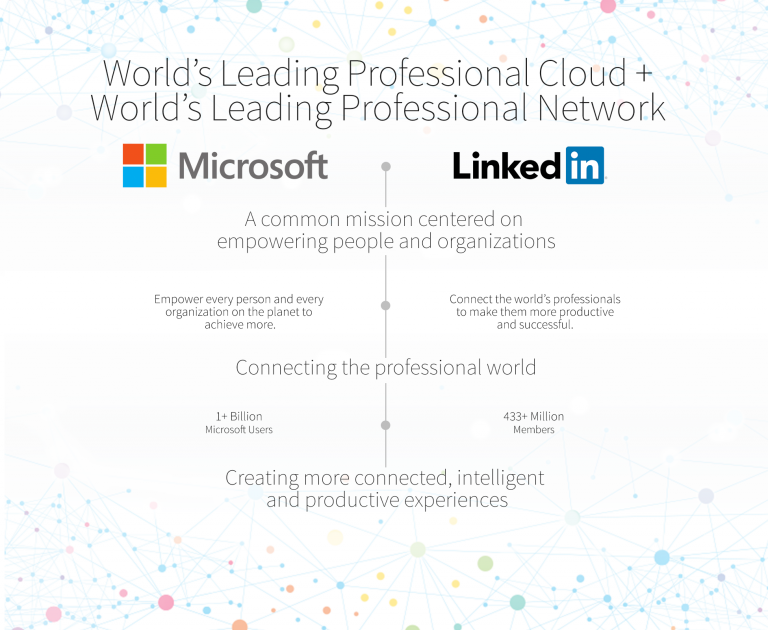Why LinkedIn for Construction Contractors?
It doesn’t hit the headlines as much as other social media platforms, but when it comes to a social media tool with professional prowess, none come close to LinkedIn. Over the past couple of years, LinkedIn – first launched in 2003 – has overcome its reputation of predominantly being a recruitment tool and has shown its worth as a genuine networking and lead generating platform for many industries, especially Construction. The recent acquisition by Microsoft could be a fundamental game changer to the future of LinkedIn for construction contractors, depending on how you currently use the professional social media.
LinkedIn is especially good for Construction Contractors because it replaces that business card folder with, essentially, an automatically updating address book. More Contractors are relying on LinkedIn as their first port of call to track down contacts that they haven’t liaised with recently to see whether they have switched roles, moved companies and so on. It also reveals who-knows-who by way of displaying mutual removed connections (which comes in handy when trying to assess the politics of an ITT) a lot more so than your trusty little black book or spreadsheet of contacts. By keeping your own profile up to date, you’re not only returning the favour to your connections, but you also feature in their newsfeed and unobtrusively promote you and your company in the process.
LinkedIn acquisition
The recent completion of Microsoft’s acquisition of LinkedIn has caused a stir throughout the tech sector for multiple reasons. Although Microsoft has claimed that it is business as usual for LinkedIn, there are signals that there are huge plans for the social network to justify the huge $26 Billion investment.
Unhappy Salesforce
Salesforce CEO Marc Benioff was quick to counteroffer Microsoft’s initial bid, despite not having nearly enough cash to compete with Satya Nadella’s (Microsoft CEO) purse-strings. And when that move didn’t pay off, Benioff publicly tried everything to block the take-over full stop. Why? Microsoft owning LinkedIn is a double hit for Salesforce and other smaller SAAS CRM providers. CRM models rely on data integrations from LinkedIn to get ahead of CRM giants such as Microsoft, Oracle and Sage. Now Microsoft owns LinkedIn, that source of data is no longer guaranteed to the likes of Salesforce. The closing door on data is only half the bad news for sales CRMs such as Salesforce. The real kick in the teeth is that the changes aren’t level across the playing field because Microsoft still has access, in fact, Microsoft has more access than the rest of the competition ever have had or ever will have. Ouch.
What that means for you
In the JBKnowledge 2016 Construction Technology Report, 39% (of the 2600 industry participants surveyed) indicated that they do not use a dedicated construction CRM, and around 20% use a CRM system that integrates with LinkedIn that isn’t Microsoft Dynamics, so it’s time to pay closer attention to your CRM’s roadmap and not take that integration functionality for granted.
Future of LinkedIn for Contractors
One of the speculations around the future of Microsoft’s $26Billion investment is to put Microsoft Dynamics 365 and Microsoft Dynamics CRM users at an advantage. It goes much further than just the size of LinkedIn’s current 433+ million strong user base, and instead, considers the ‘serious intelligence capabilities‘ based on the quality and value of the insights available.
Imagine a business development pipeline management tool that displays LinkedIn activity and Sales Navigator intelligence alongside existing data such as email opens, email CTRs, web downloads and web page views etc. This combined intelligence, along with easy-to-see traceability, will be the catalyst to social selling for those that have yet to embrace the concept.
Takeaway
If you are using LinkedIn passively at the moment – as that living and breathing roller-deck I mentioned earlier – it may be time to get up to speed with social selling etiquette. The LinkedIn acquisition may not have a dramatic impact for the majority of the 430+ million users, but it will have awoken the masses of business development professionals using Microsoft Dynamics CRM functionality. Whether you are a Dynamics user or not, social selling and an active LinkedIn presence are going to become the new minimum standard for brand awareness and lead generation.


 Article by:
Article by: